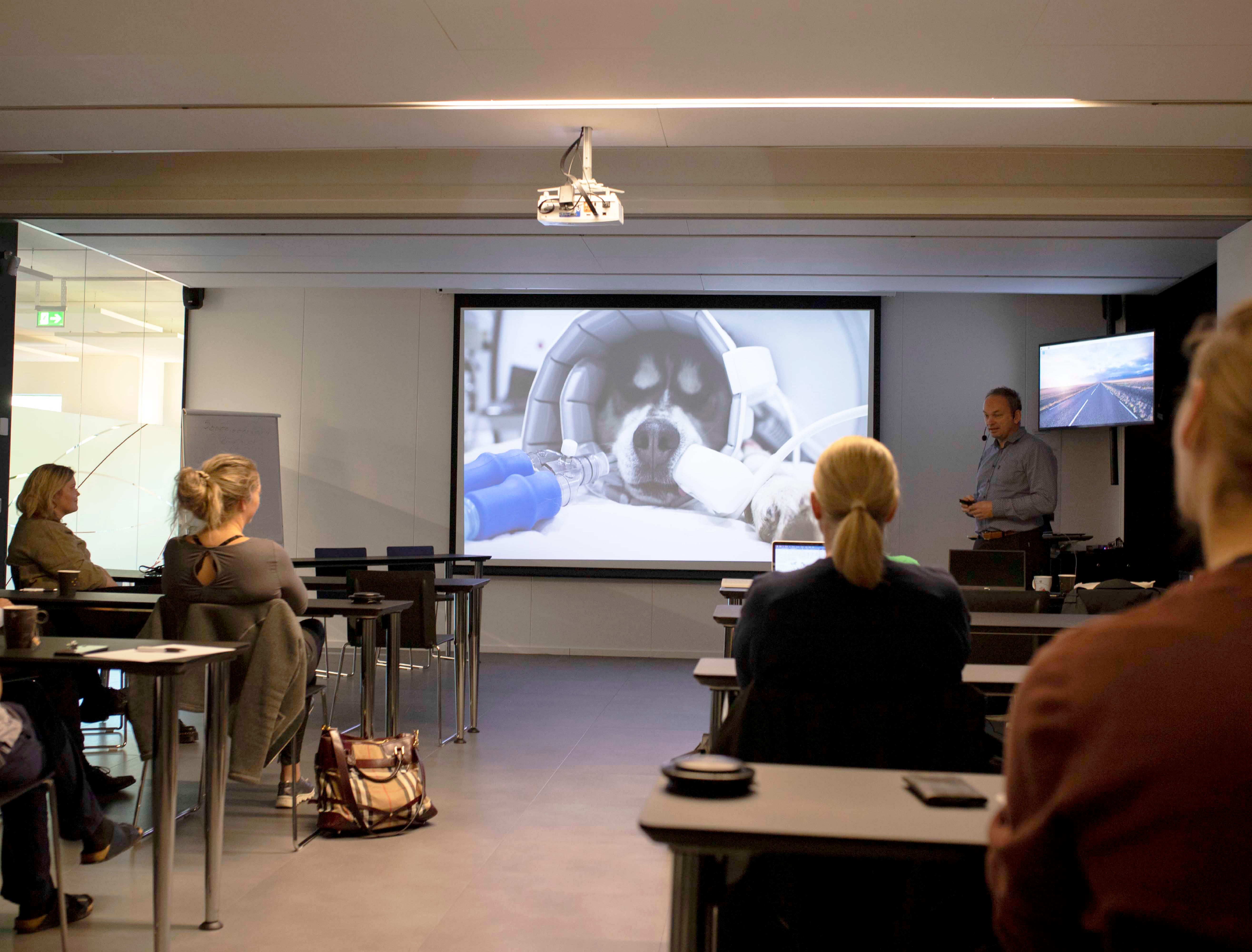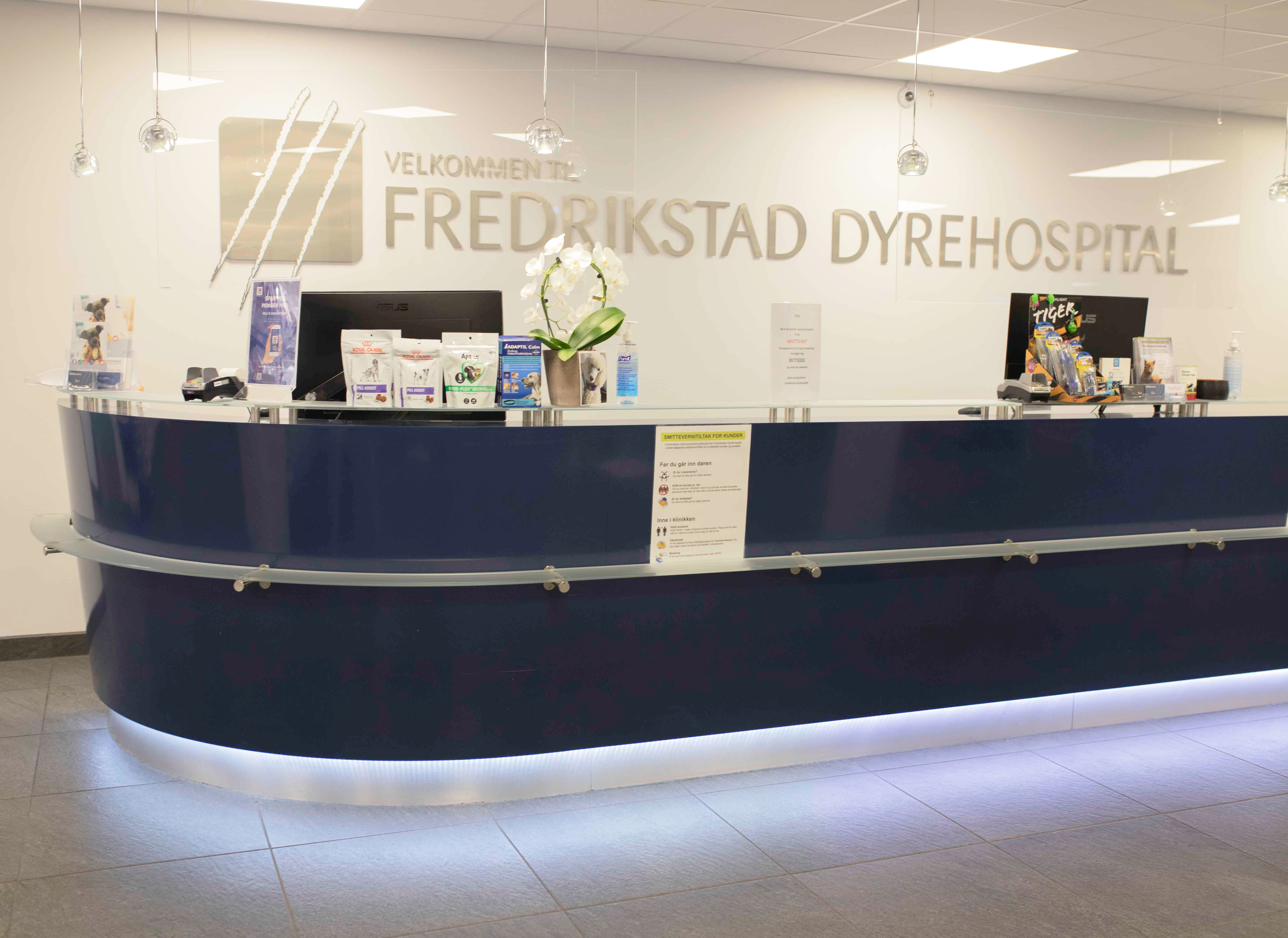In 2019, one of Norway’s leading veterinarian hospitals, Fredrikstad Animal Hospital, wanted to improve the diagnosis of neurological diseases in dogs and cats and, by doing so, tailor the medical and surgical treatment plan for their patients.
“Most veterinary hospitals in Scandinavia use a CT scanner in the diagnostic workup of dogs and cats with neurological diseases. This can be a great tool to use in patients with lesions affecting the bony vertebral column or the skull. But when we want to have a detailed look at things like the brain, spinal cord or nerve roots, we need the kind of images that the MRI scanner can produce in order to make the right decision,” says Bodil Cathrine Koch, the lead veterinarian in neurology and neurosurgery at the hospital located to the south of the capital Oslo. With a staff of 60, they treat more than 15.000 four-legged patients on a yearly basis.
The hospital decided to invest in a SIGNA™ Explorer MRI scanner from GE Healthcare. More than two years on, the investment has proved worthwhile for its detailed images and ease of use. Having earned her diploma as a surgeon and specialist in neurology at the European College of Veterinary Neurology, Bodil Cathrine Koch is not a trained radiologist, but still finds the scanner easy to use.
“I am able to get the images I need without problems. Having the MRI scanner in-house, we can take the animal straight from the scanner and into surgery if needed without having to wake the patient from anesthesia, it works really well. But yes, In 2019, one of Norway’s leading veterinarian hospitals, Fredrikstad Animal Hospital, wanted to improve the diagnosis of neurological diseases in dogs and cats and, by doing so, tailor the medical and surgical treatment plan for their patients. We are looking to hire a radiographer and at some point to hire a radiologist in order to utilize the machine to its full potential,” says Bodil Cathrine Koch.
“The better tools we have for accurate diagnosis, the better we can make the right decisions and provide the best treatment for the patient and their owners.”
Bodil Cathrine Koch, EBVS® European Specialist in Veterinary Neurology at Fredrikstad Animal Hospital.
Enhancing diagnosis
As is the case in hospitals for humans, the tools and methods for treating and curing animals keep improving, a trend that is true for orthopedic diseases as well as within the area of neurology. But the diagnostic side can be more difficult, not least for the obvious reason that the patients can’t be asked where it hurts or tell how they are feeling. When a cat or a dog e.g., break a leg, it’s not difficult to identify the problem and, hence, the right cure. But what if the animal has convulsions, paralysis of the hind legs, balance problems or suffer from behavioral disorders?
“When we want to have a detailed look at things like the brain, spinal cord or nerve roots, we need the kind of images that the MRI scanner can produce in order to make the right decision.”
Bodil Cathrine Koch, EBVS® European Specialist in Veterinary Neurology at Fredrikstad Animal Hospital.
“No doubt, the diagnostic process is more difficult when we talk about neurological diseases as the brain and spinal cord are well protected from the rest of the body and therefore relatively inaccessible to us as diagnosticians. And this is where our MRI scanner has proved its value. In many cases, our experience in interpreting symptoms can bring us far, but we frequently have to use our MRI scanner in order get closer to a diagnosis we feel that we can trust and make a decision upon,” Bodil Cathrine Koch explains while also adding:
“By using this practice, we are also expanding our pool of knowledge and insights. This is another advantage one should certainly not underestimate the value of.”
In some cases, the diagnostic process ends with a question rooted more in ethics than in medicine. While a lot can be done, Bodil Cathrine Koch and her colleagues will then have to ask if it is advisable to move on with medical or surgical treatment, even if it is technically possible.
Fredrikstad Animal Hospital in Norway has 60 employees and treat more than 15.000 four-legged patients on an annual basis.
“This is not always an easy discussion, but one we have to take. Today, many pets, especially cats and dogs, have become more of a family member than ever before, and at the same time many pet-owners are also better insured than we saw just ten years ago. This increases the demand, or if you will, the pressure for advanced treatments. And sometimes in these cases, it can also be beneficial to have MRI images to point to. The better tools we have for accurate diagnosis, the better we can make the right decisions and provide the best treatment for the patients and their owners.”







